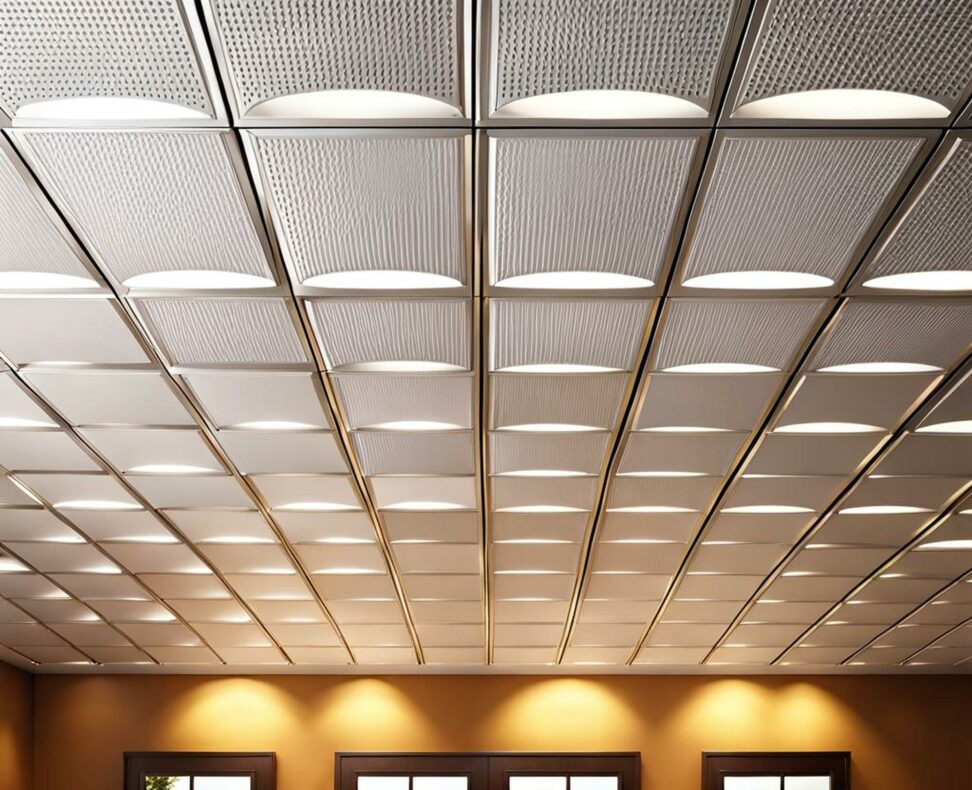Restaurant Ceiling Tiles for Easy Access and Maintenance
The ceiling is often the most overlooked design element in a restaurant kitchen. Yet this expansive canvas plays a pivotal role in creating a functional workspace. Beyond just forming the roof overhead, the right commercial kitchen ceiling tiles allow convenient access for repairs and upgrades. With features like washability, durability, and mold resistance, they also permit easy maintenance - critical in a demanding restaurant environment.
We'll look at different tile materials and systems to help you choose the ideal option for your needs. With the right ceiling tiles, you can transform your kitchen into an efficiently-run engine that delivers unmatched culinary experiences for your guests.

Benefits of Accessible Ceiling Tiles
Standard ceiling tiles are designed to remain in place once installed. But in a commercial kitchen, you need the flexibility to get above the ceiling surface. Restaurant ceiling tiles that provide access to the plenum space offer several advantages.
Convenient Access to Infrastructure
Accessible ceiling tile systems make it easy to reach wiring, lighting, HVAC systems, and other infrastructure without demolition. This means you can perform electrical upgrades or routine maintenance without the added costs of drywall repairs or hiring expensive contractors. Simply swap out a damaged tile to get immediate access. Strategically placed ceiling access panels can be a lifesaver when issues arise.
Facilitate Repairs and Upgrades
Over time, infrastructure elements may need to be repaired or upgraded. Being able to directly access the ceiling space allows you to switch out lighting fixtures, replace old ductwork, or upgrade ventilation fans. As technology evolves, you can seamlessly integrate new capabilities like IoT sensors or state-of-the-art fire suppression systems.
Enable Regular Inspections
Accessible ceiling tiles support proactive maintenance. You can periodically check for water damage, mold growth, or leaks that could jeopardize food safety. Routine inspections of HVAC systems and vents also help spot potential issues before they become costly repairs. Plus, you can monitor for pest infestations and promptly address them.
Features That Allow Easy Maintenance
In addition to accessibility, restaurant kitchen ceilings must withstand hot, humid conditions and daily wear-and-tear. The right materials and protective finishes ensure ceiling tiles stay clean and intact for years.
Washable and Scrubbable Surfaces
Kitchen ceilings are prone to grease buildup and food splatters. Tiles with non-porous surfaces can be washed daily and scrubbed clean. Choose options rated for high-pressure washing to remove the toughest grime. Check that cleaning solutions won't degrade or discolor the tiles.
Mold and Mildew Resistance
The warm, moist environment in restaurant kitchens makes mold and mildew a constant concern. Mold-resistant ceiling tiles inhibit growth of dangerous bacteria that can impact food safety. They are also easier to sanitize and help avoid permanent stains or foul odors.
Durability for High-Traffic Areas
From rolling carts to ladders, commercial kitchens see heavy daily traffic and collisions. Impact-resistant ceiling materials that can withstand bumps, abrasions, and humidity are essential. Longevity also reduces the need for frequent tile replacement.
Stain Resistance
Despite precautions, staining from oil, grease, food splatter or other kitchen substances can occur. Ceiling tiles with non-porous or stain-repellent coatings allow stains to be washed off easily. This maintains a clean, professional look year after year.
Choosing the Right Ceiling Tile System
To reap the benefits of accessibility and easy maintenance, the ceiling tile system must be designed for your specific application. Here are key considerations when selecting materials.
Suspended vs. Direct-Apply
Suspended ceiling systems involve laying tiles into an exposed grid. This allows access to the plenum but can look industrial. Direct-apply tiles adhere right to the existing surface for a cleaner finish but don't permit accessibility.
Panel Options by Material
PVC, metal, mineral fiber, and foam are common tile materials, each with advantages. Consider acoustics, weight, fire rating, moisture resistance, and sustainability. The material must also meet local building codes.
Aesthetic Choices
The style, color, and pattern of your ceiling tiles impact the ambiance. Bold, modern textures or clean monochromatic looks are popular. Coordinate with your overall kitchen design. Leading brands offer extensive collections to achieve your vision.
Trends in Ceiling Tile Innovation
Technology continues advancing ceiling tile performance and capabilities.
- Energy efficiency - Tiles with high R-values reduce energy costs through insulation.
- Sustainability - Recycled, biodegradable and non-toxic materials are eco-friendly.
- Integrated lighting - LEDs built into tiles add aesthetic appeal and function.
- Smart technology integration - Connected tiles can monitor data and enhance operations.
The right ceiling tiles allow you to access, maintain, and refresh your commercial kitchen as needed. Options with moisture-resistance, durability, and cleanability withstand heavy restaurant use. Keep accessibility, low-maintenance, and food safety top of mind when selecting ceiling materials. With strategic planning, your kitchen's ceiling can be an asset rather than an afterthought in crafting your ideal workspace.